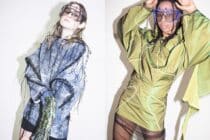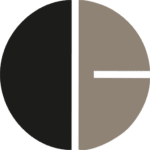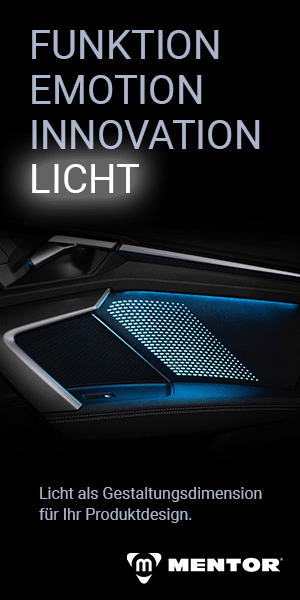„Künstliche Intelligenz beflügelt meine Kreativität.“
Generative KI ist eines der spannendsten Designthemen der Gegenwart – und verändert bereits spürbar, wie Designer*innen arbeiten. Die Branche testet intensiv, was mit KI möglich ist und Arbeitsprozesse verändert. In einer losen Serie tauschen wir uns mit Kreativen über ihre Erfahrungen aus. Dieses Mal mit dabei: Charles Nix, Senior Executive Creative Director bei Monotype.
Welche Chancen bietet Künstliche Intelligenz für die Kreativbranche?
KI-Technologien eröffnen radikale neue Möglichkeiten. Besonders im Hinblick auf die Weiterentwicklung unserer heutigen Arbeitsweisen liegt das größte Potenzial in der Geschwindigkeit der Umsetzung: bei der konzeptionellen Einordnung und Neuausrichtung von Aufgaben, beim schnellen Prototyping zur Ideenentwicklung, bei der vielseitigen Erstellung visueller Entwürfe als Gesprächs- und Feedbackgrundlage, bei der Vorbereitung von Materialien – und schließlich in der eigentlichen Ausspielung.
Darüber hinaus liegen die meisten Chancen im noch Unbekannten – in dem, was erst entdeckt werden will. Kreative, die sich auf neue Workflows einlassen, erschließen sich neue Arbeitsmethoden und Ausdrucksformen. Wir werden diese Tools auf Arten nutzen, die sich zunehmend von bestehenden Arbeitsweisen lösen – und so das definieren, was als Nächstes kommt. Das Potenzial kreativer Entfaltung wächst dadurch erheblich.
Wie beurteilst Du den aktuellen Stand von Design und KI?
Wir befinden uns in einer Phase des Umbruchs – ein Zustand, den wir aus der Vergangenheit kennen: vom Buchdruck über mechanische Satz- und Druckpressen bis hin zur Fotoreproduktion, zum frühen digitalen Satz und schließlich zum Desktop-Publishing. Mit jeder technologischen Neuerung haben wir zunächst versucht, sie im Rahmen unserer bisherigen Praxis zu verstehen. Aktuell betrachten wir Künstliche Intelligenz durch die Brille von 30 bis 40 Jahren Design- und Produktionsgeschichte. Den entscheidenden Durchbruch über diese Perspektive hinaus haben wir allerdings noch nicht geschafft.
Welche Herausforderungen siehst Du beim Einsatz von KI im kreativen Prozess?
Die zentrale Herausforderung liegt darin, menschliche Kreativität neu zu definieren. Was bedeutet es, kreativ – und dabei menschlich – zu sein, angesichts so mächtiger Werkzeuge? Diesen Fragen widmen wir uns gerade im neuen Projekt zum Trend Human Types. Ziel dabei ist es, das Zusammenspiel von künstlicher Intelligenz und Typografie auszuloten und das gestalterische Potenzial ebenso wie die Grenzen generativer Technologien zu beleuchten.
Eine weitere Herausforderung ist die Frage nach dem geistigen Eigentum: Gehören unsere Prompts – also die Art und Weise, wie wir Aufgaben formulieren und umformulieren – wirklich uns? Stillen sie unser kreatives Bedürfnis oder unterbrechen sie vielmehr den experimentellen Prozess, der oft zur besten Idee führt? Werden „Prompting“ und „Curation“ zur einzigen kreativen Leistung? Und übertragen wir das Prinzip, dass ein hoher „Fertigkeitsgrad“ als Beweis für Kreativität gilt – wie bei bisherigen digitalen Tools – nun einfach auf ein viel mächtigeres Set an Werkzeugen? Kurz gefragt: Ersetzen scheinbar „kreative“ oder „gut designte“ Ergebnisse zunehmend echtes kreatives Denken und gestalterisches Können?
Wie verändert Künstliche Intelligenz deine Arbeit? Und wie entwickelst du deinen eigenen Stil?
KI-Technologien beflügeln meine Kreativität. Sie erlauben mir, spontane Ideen auszuleben, neue Umsetzungswege zu testen und bestehende Konzepte zu hinterfragen. Die Frage nach dem eigenen Stil halte ich in diesem Kontext für weniger relevant – auch wenn sie viele Kreative umtreibt. Stattdessen würde ich sie so umformulieren: Was macht mich einzigartig? Welchen Mehrwert bringe ich in meine Zeit und mein Umfeld? Warum habe ich das Bedürfnis, zu gestalten und zu kommunizieren? Was möchte ich mit meiner Arbeit auslösen? Wie berühre ich mein Publikum?
Welche KI-Tools kannst du empfehlen?
Alle. Es ist noch zu früh, um sich festzulegen. ChatGPT ist ein guter Gesprächspartner, DALL·E ein leistungsstarkes Bild-Tool. Frag ChatGPT einfach nach einer aktuellen Liste – die Tools entwickeln sich rasant weiter. Was heute funktioniert, kann in einer Woche schon überholt sein.
Welche gelungenen KI-Projekte fallen dir ein?
Das ist schwer zu beantworten, weil die Integration aktuell in Echtzeit geschieht. Beispiele sind die Arbeiten von Superside, die Künstliche Intelligenz gezielt für Kunden einsetzen, oder Work & Co mit ihrer Serie „AI at Work & Co“. Auch die Projekte von People Made Machines und Neural Codex zeigen, was bereits möglich ist. Das ist aber erst der Anfang – neue Arbeiten entstehen täglich, weil Marken und Agenturen sich differenzieren wollen.
Worauf sollten Kreative besonders achten, um mit KI zu guten Ergebnissen zu kommen?
Auf Input und Output. Sorgfältige Formulierung der Aufgabe (Input) und kompromisslos kritische Bewertung der Ergebnisse (Output). Beides sind zentrale Bestandteile kreativen Arbeitens – und gewinnen umso mehr an Bedeutung, wenn sich die Produktionsmittel grundlegend verändern.
Welchen Rat gibst du jungen Talenten, die mit KI experimentieren?
Fahr an der nächsten Ausfahrt vorbei. Such den nächsten Ort. Entdecke Neues. Brich Erwartungen. Erfinde das Morgen. Nutze die Power der Tools – aber noch mehr: deine eigene kreative Kraft, um eine Zukunft zu gestalten, wie wir sie bisher nicht kannten. Nutze diese neue Stärke, um Kultur mitzuprägen.
„AI inspires my creativity.”
Generative AI is one of the most exciting design topics of our time – and it’s already reshaping the way designers work. The industry is actively exploring what’s possible with AI and how workflows are evolving. In this ongoing series, we speak with creatives about their experiences. This time, we’re joined by Charles Nix, Senior Executive Creative Director at Monotype.
What opportunities does AI offer for the creative industry?
AI technologies offer radical opportunities for the creative industries. In terms of evolution of our current working methods, the chief opportunity is in speed of execution: in the conversational/conceptual framing and reframing of problems to be solved, in rapid prototyping for testing concepts, multi-faceted production of comprehensive sketches for conversation and critique, in the preparation of materials for deployment, and in the deployment itself.
There is an order of magnitude more opportunities in the yet-to-be-discovered (known unknowns). Creatives engaging with new workflows will discover new methods of working and new forms of expression. We will use the tools in ways that begin to branch away from our current working methods—that will find and define what comes next—that will unleash more of our creative power.
How do you see the current state of design with AI?
We’re in that natural state of encountering upheaval. It has happened many times in the past: with movable type, with mechanized typesetting, with steam-driven presses, with photographic reproduction, with early digital typesetting and production, and of course in the age of desktop publishing. With the arrival of each new technology, we seek to make sense of it in terms of our current way of working. Now, we’re looking at AI technologies in light of the last 30 to 40 years of design and production. We’ve yet to break through the barrier of our recent past.
What challenges do you see when using AI in the creative process?
The chief challenge is defining human creativity. What does it mean to be human and to be creative in the face of such powerful tools? We’re currently exploring these questions in a new project on the trend Human Types. The goal is to examine the interplay between artificial intelligence and typography, to explore both the creative potential and the limitations of generative technologies.
Also, there’s the challenge of ownership. Do our prompts—our framing and reframing of the problem to be solved—qualify as “ours”? Are they enough to feed our creative need? Are they short-circuiting our creative process of discovery through experimentation? Are prompting and curation (two crucial factors in traditional creative work) becoming the sum total of creative input? Are we extending the concept of “level of finish as proof of creativity” (inherent in our previous crop of digital tools) into a new, more powerful set of tools? Do “looking creative” and “looking designed” become stand-ins for creativity (intelligence and skill) and design (execution)?
How is AI changing your work? And how do you develop your own signature style?
AI technologies are unleashing my creativity. They’re allowing me to exercise creative impulses. They’re opening up avenues of execution, testing, and questioning. How do you develop your own signature style? This is the wrong question (though one every designer has contemplated). I would rephrase it in a dozen different ways: What makes me unique? What value do I bring to the time and place? Why do I feel the need to create and communicate? What do I hope to evoke through my work? How do I move my audience?
Which AI tools can you recommend?
All of them. It’s too early to commit to any one of them, but ChatGPT is a good conversational partner, and DALL•E is a good image maker. Ask ChatGPT for a list of recommended tools! Each of the tools and suites are evolving rapidly. What serves you today may change in one month’s (or one week’s) time!
What examples of successful creative work realised with AI can you think of?
This is a tough one, because the integration is happening before our eyes. Look at the work that Superside has done leveraging AI for customers. Look at Work & Co’s “AI at Work & Co” pages. Look at the work by People Made Machines and Neural Codex. These are just the tip of the iceberg. AI is a differentiator in this transitional period. New work will be arriving daily as brands and the agencies that serve them look to stand out from the crowd.
What do creatives need to pay particular attention to when working with AI to ensure a good result?
Input and output. Careful framing/framing of the request (input) and absolutely ruthless criticality of the results (output). These are crucial and enduring aspects of creativity and design. They take on intense importance when the technology of production changes.
What advice would you give to young talents experimenting with AI?
Drive past the exit. Go to the next place. Explore. Defy expectations. Create the new. Push the power of the tools through the power of your creativity to invent a future unlike any past we’ve known. Use your amplified power to engage and shape the culture.








0 Kommentare